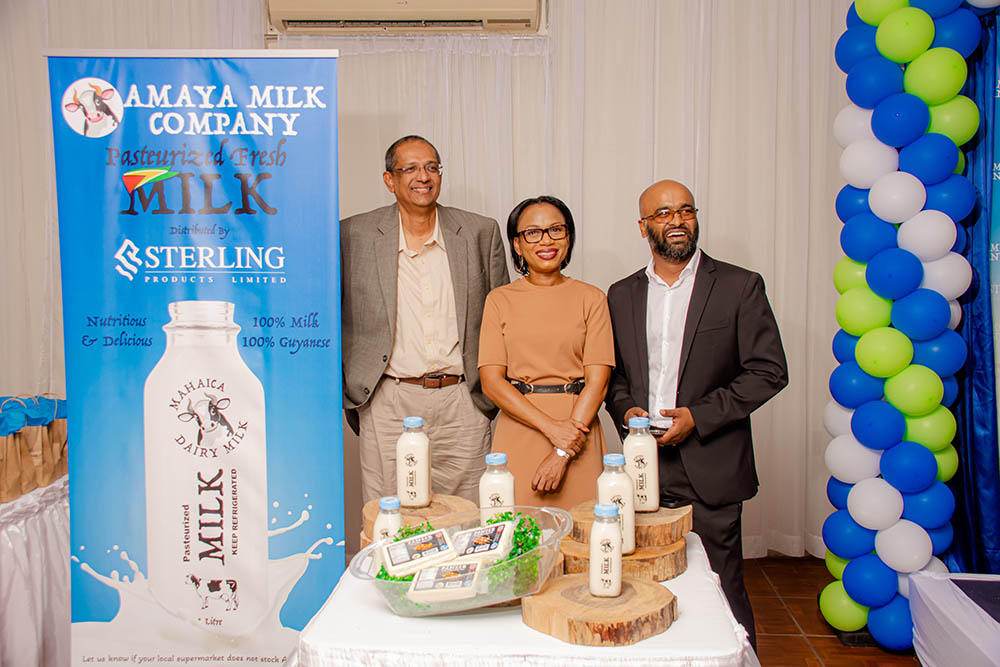More than two years ago an article published in another section on the local print media announced, in the wake of the signing of an agreement between Amaya, the Guyana Office for Investment (Go-Invest) and the Ministry of Agriculture, that yet another undertaking was underway towards the creation of a viable dairy industry in Guyana. With the issue of a local dairy industry having long been regarded by both the state and the private sector as an accomplishment that would add significant value to the country’s food security credentials, official public pronouncements, over the years, sought through vigorous advocacy to shift the attention of the country’s agricultural sector in that direction. It failed, one local agriculturalist told the Stabroek Business, because at that time the country’s agricultural sector lacked the phyto-sanitary credentials to meet the standards required of a “world class dairy industry.” The required credentials, it had been argued, depended on large scale investment which was thought to be unaffordable to most of the country’s farmers as well as an “innate sensitivity” to food safety standards which, it was felt, was not, “all those years ago”, a preoccupation with a great many farmers.
Just over two years ago, however, an article in another section of the local media announced that in the wake of the signing of an agreement between the Amaya Milk Company, the Ministry of Agriculture and the Guyana Office for Investment (Go-Invest), the country was about to take a ‘tilt’ at “producing fresh pasteurized milk in a state-of-the-art milk plant, utilizing cutting edge technology, along with stringent quality standards, to produce milk of unmatched quality . . .” If, at the time, the pronouncement might have come across as just another commercial gimmick, the company’s Managing Director, Omkaar Sharma would now appear to have provided tangible evidence that he has kept his word. Deadlines attached to the completion of major projects in Guyana are usually considered with a proverbial pinch of salt, though when the published timeline, the end of 2022, passed without the product appearing of supermarket shelves, Agriculture Minister Zulfikar Mustapha attributed the circumstance to “delays due to the rainy season,” though he hastily sought to provide the assurance that works were “moving apace on the plant’s construction.”
The Agriculture Minister’s “moving apace” assurance appeared to be altogether justified when, during a conversation with Amaya’s CEO just over a week ago he disclosed that a distribution contract had been signed with Sterling Products Ltd. and that the product’s appearance on local supermarket shelves was imminent. This week, the Stabroek Business verified the presence of the product on display at Mattai’s Supermarket in Georgetown. Last week, Sharma told the Stabroek Business that the plant currently has the capacity to produce between 300 and 400 gallons of milk daily. With his substantive promise now considered to have been kept, Sharma told the Stabroek Business that he has now turned to keeping a promise to give more attention to making a meaningful contribution to the much broader growth of the country’s dairy industry. The launch of the new milk plant has created a market for farmers operating within a one-hour drive from its operations. Particularly concerned over food safety considerations, Sharma told the Stabroek Business recently that the company is collaborating with Sterling Products in order to ensure the availability of containers (bottles) that provide guaranteed food safety bona fides.
The protocols associated with the delivery of milk to the plant by farmers are reassuring. The delivered milk is received and weighed in the collection area following which it undergoes “strip tests” in order to determine that it has not been diluted. Thereafter, it is subjected to a machine-driven analysis in order to determine the extent of its fat and protein content. Finally, it is subjected to a three-stage pasteurizing process prior to bottling for marketing. A bottle recycling regimen applies which requires consumers to pay a deposit on each bottle which deposit will be returned for the bottle. Upon the bottle’s return, the deposit will be refunded or deducted from the next purchase. The shelf life of the milk is seventeen (17) days. Once the milk is opened for use, it is recommended that, thereafter, that what remains is refrigerated. According to Sharma, going forward, the company will be seeking to establish Collection Centres, and beyond that, to invest in delivery trucks. He said that another of the company’s goals is to collaborate with the Ministry of Agriculture in pursuit of the objective of increasing the milk yield of the cows. He told the Stabroek Business that while, locally, yield currently stands at around one and a half gallons per day, globally, yield is some known to be as high as four (4) gallons per day.
Sharma told the Stabroek Business that the idea of undertaking the milk plant initiative had arisen out of the difficulty he had faced about eight years ago, while on holiday in Guyana, where he was unable to secure fresh cows’ milk for his six-month old child. A ‘complaint’ to one of his friends was met with the response that perhaps he (Sharma) may wish to consider “putting it on the supermarket shelves.” It would appear that he took up the challenge. The Leonora-born engineer migrated to Canada about eighteen years ago. Insofar as his present business pursuits in Guyana are concerned he believes that these will benefit from his twelve years as an engineer in the dairy sector in Canada. A huge incentive to invest in the Dairy industry in Guyana, had, he said, derived from the fact that as an ‘old hand’ in the sector in Canada he was afforded a 40% discount on the equipment he purchased (in Canada) for his Guyana operations. He estimates his investment in his local milk plant operations at around $G280 million dollars. The company’s investors include the acquisition of an electricity generator.







